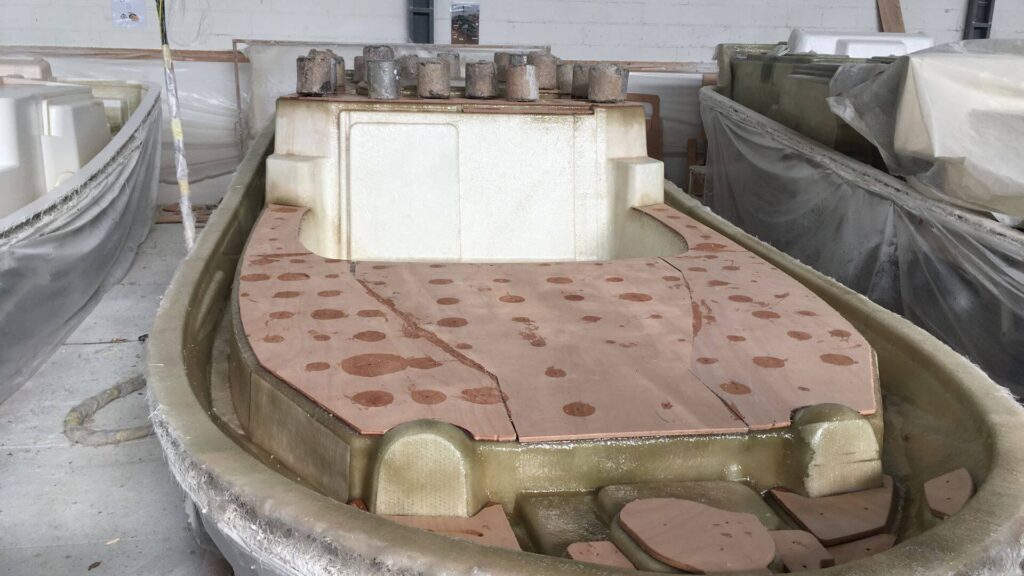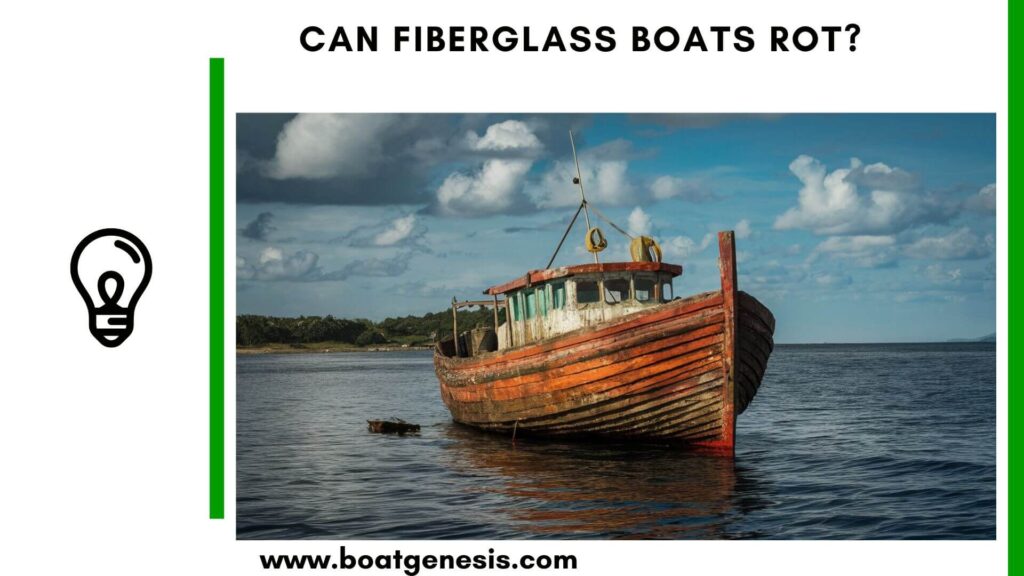If you’re a boat owner or enthusiast, you might be wondering whether fiberglass boats can rot. Fiberglass is a popular material used in boat building due to its durability and resistance to water damage.
However, like any other material, it’s not immune to wear and tear over time.

Fiberglass itself does not rot, as it is made up of plastic, glass fiber, and resin.
However, the wood used to support and shape the fiberglass can rot if it’s exposed to water for extended periods. This can compromise the integrity of the boat and create safety hazards for passengers.
In this article, we’ll explore the factors that can cause fiberglass boats to rot, how to prevent it, and what to do if you suspect your boat is experiencing rot.
==>> Also Read: How to check a fiberglass boat for rot?
Understanding Fiberglass Boat Composition

When it comes to understanding whether fiberglass boats can rot, it’s important to have a basic understanding of the composition of a fiberglass boat. A typical fiberglass boat consists of a hull, deck, transom, and other structural components.
1. Resin and Gelcoat
The hull and deck of a fiberglass boat are made from layers of fiberglass cloth and resin. The resin is the binding agent that holds the fiberglass cloth together and gives the boat its shape.
The boat builders apply gelcoat, a pigmented resin, to the outer layer of the boat to provide a smooth, glossy finish and to protect the boat from the elements.
2. Wood Core and Structural Components

Many fiberglass boats have a wood core that provides additional strength and rigidity to the boat. The wood core is made from marine-grade plywood or balsa wood and is sandwiched between layers of fiberglass cloth and resin.
This wood core is also commonly used in areas of the boat that need extra strength, like the transom or other structural components.
The wood core enhances the boat’s strength and rigidity but can also potentially rot if exposed to moisture and not adequately maintained.
Rotting wood can compromise the structural integrity of the boat and cause serious safety issues.
Preventing and Identifying Fiberglass Boat Rot

As a responsible boat owner, it is essential to take preventative measures to avoid fiberglass boat rot. Here are some tips to help you prevent and identify fiberglass boat rot:
1. Maintenance and Inspection
Regular maintenance is key to preventing fiberglass boat rot. You should inspect your boat regularly for any signs of damage or decay, including cracks, soft spots, discoloration, blisters, delamination, blistering, and warping.
Make sure to check all areas of the boat, including the hull, deck, transom, and any other areas that may be susceptible to water damage.
To prevent moisture from getting into the boat, make sure to keep it dry and well-ventilated. You can use a dehumidifier to remove excess moisture from the air, and a bilge pump to remove any water that accumulates in the bilge.
==>> Also read: Are old fiberglass boats safe?
2. Repairing Damage and Decay
If you do find any signs of damage or decay during your inspections, it is essential to address them promptly.
Remember to seek professional help to repair fiberglass boat rot promptly.
Factors like age and moisture exposure can cause dry rot, which is common in fiberglass boats.
If you suspect that your boat has dry rot, it is important to address the problem immediately. Dry rot can weaken the structure of the boat and make it more susceptible to damage.
Final Word
In conclusion, preventing and identifying fiberglass boat rot requires regular maintenance and inspections.
So, by taking the time to inspect your boat regularly and addressing any problems promptly, you can help ensure that your boat stays in good condition for years to come.




